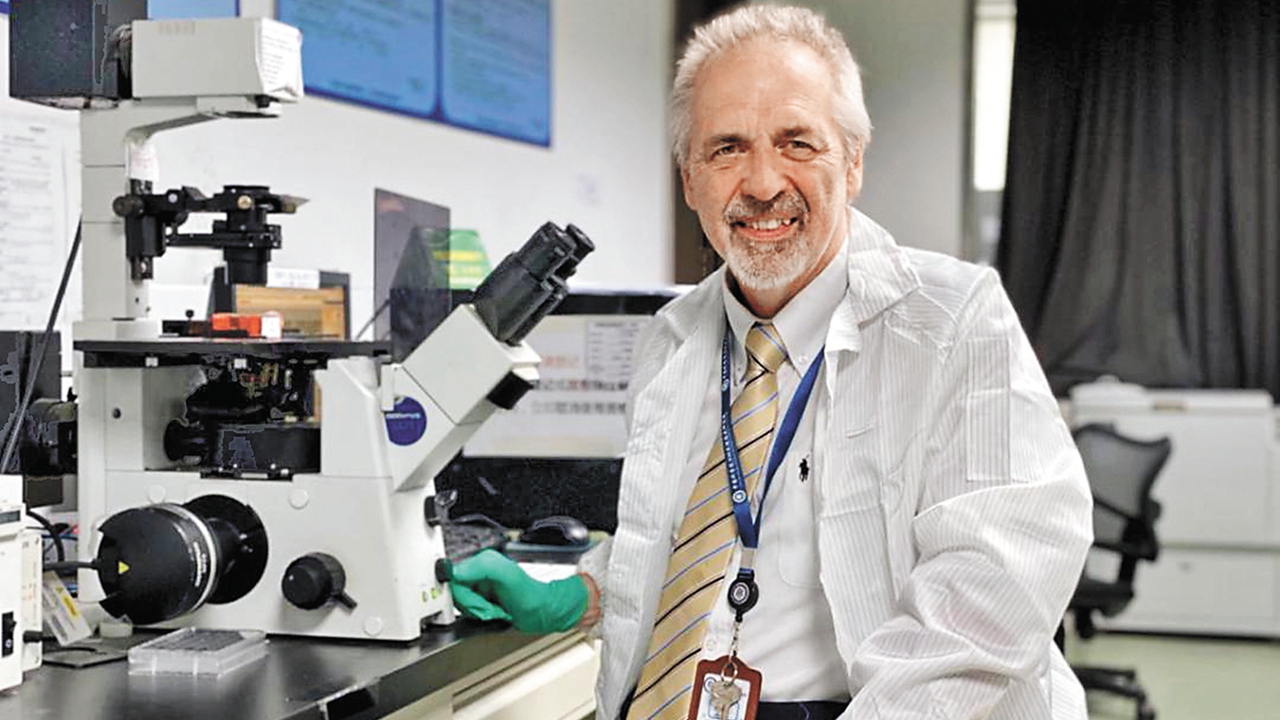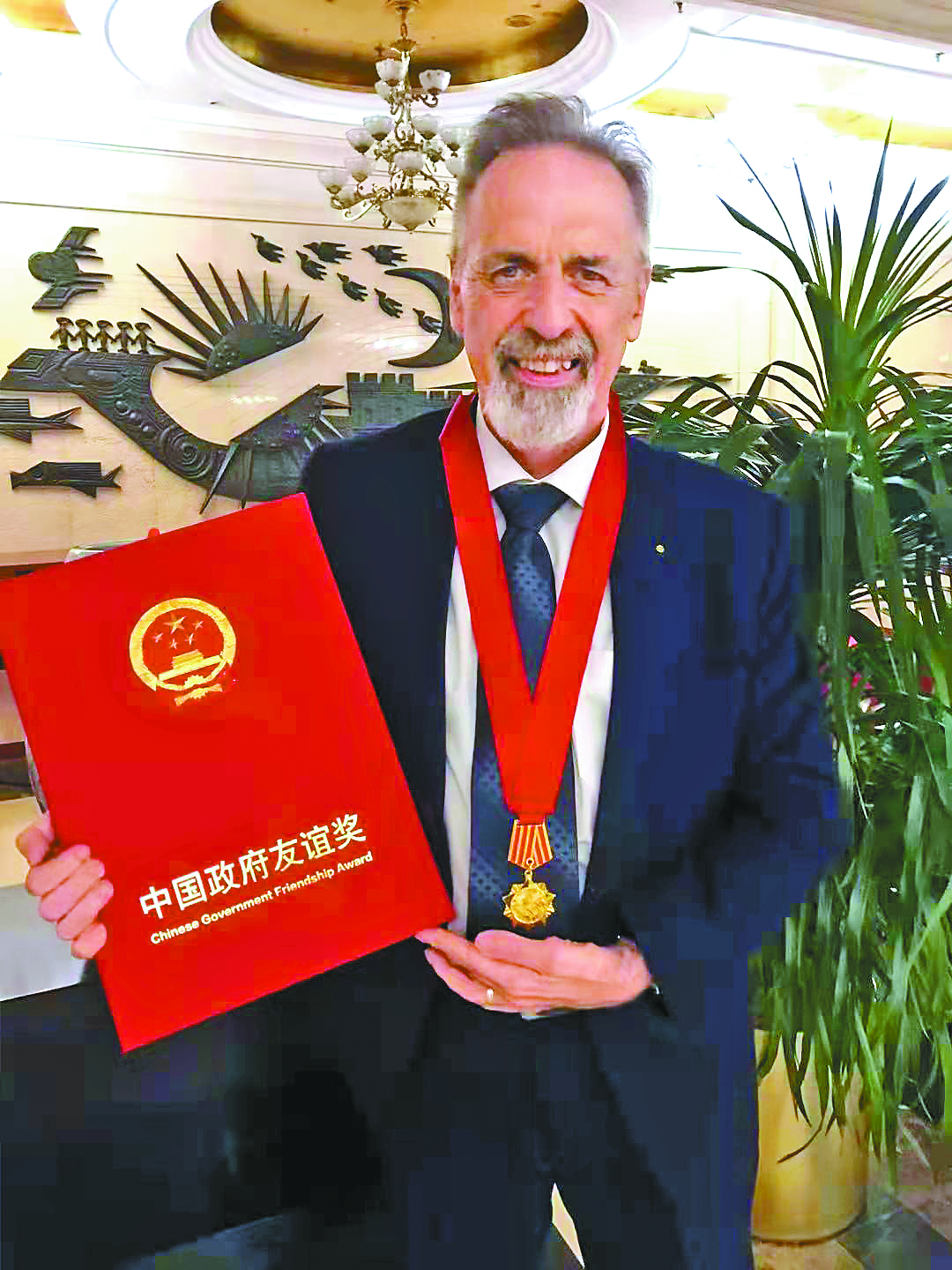Scientist glad to play a part in fostering intl. collaboration
It is universally acknowledged that the human body can be thought of as a very complex and extraordinary living machine, and that the body needs energy for everything it does: breathing, eating, sleeping, walking, working and other activities that we perform in our daily lives.
John Roger Speakman, a professor from the Shenzhen Institute of Advanced Technology (SIAT) of the Chinese Academy of Sciences, has been studying the fundamental questions about energy balance. In his long and fruitful scientific career, much of his work has focused on understanding the factors governing variations in food intake and energy metabolism.

John Roger Speakman with the Shenzhen Institute of Advanced Technology (SIAT) of the Chinese Academy of Sciences works at the lab in this undated file photo. Photos by courtesy of SIAT
In Shenzhen, a city of innovation, the British scientist is building a laboratory that is as close as he can to the ideal, in hopes of gathering great minds to find personalized solutions for aging and obesity issues.
Speakman won the China Friendship Award in 2021 for his outstanding contribution to the country’s modernization drive and the first Guangdong Friendship Award this March.
‘Do great science’
“I was really pleased when I got the news. Any kind of recognition for the work that we’re doing is really good,” Speakman talked about his thoughts about winning the Guangdong Friendship Award in an interview.
Speakman has been in China for over a decade. In 2011, he resigned from his position at the University of Aberdeen in the U.K. and moved to Beijing with his family.
“I came to give a talk here in Shenzhen, and part of the trip was to visit different places and it was just a real feeling that this was an exciting place, so at that point I was already quite interested in the possibility that I might move here,” Speakman said.

Speakman poses for a photo with his China Friendship Award certificate in this 2021 photo.
In 2020, Speakman came to Shenzhen and began serving as the chief scientist at SIAT’s Center for Energy Metabolism and Reproduction.
“The main thing [I do] is probably related to obesity. We’re contributing to stopping those health problems from developing. I want to find out more about the way things work,” he said.
Speakman said he has what he needs at SIAT to get on with his research, and with the construction of his laboratory.
“I got a lot of startup money that allows me to establish the laboratory that I wanted to build. That’s the best kind of support that any work can get,” he said. According to him, the lab’s Phase I is now completed and Phase II is just about to be built by the summer.
“My plan is to make sure that we do some great science and recruit lots of good people to do some work here. We didn’t really achieve yet what I want to achieve here. Over the next decade or so, my aim is to do great work in a nice place,” Speakman said.
Intl. collaboration
According to Speakman, collaboration is always important as it can break down barriers.
“I’m very happy to play my part and to try and foster the collaboration across different countries. This is bringing together European and Chinese scientists to work together on problems, and I think this is the most powerful way to do things,” the scientist said.
For instance, as per a study that was published on the journal Science in November last year, Speakman’s team, joining hands with nearly 100 global counterparts, provided equations to predict human water turnover in relation to environmental and lifestyle factors based on an extensive dataset.
It is said that the study has revealed for the first time a wide range in the amount of water people consume around the globe and over their lifespans, definitively overthrowing the oft-repeated idea that eight glasses of water meet the human body’s daily needs.
“In 2025, I’m organizing a big conference in Shenzhen where we will have probably about 150 of the world leaders in this area coming to Shenzhen for about a week discussing science, visiting our facilities and seeing what we’re doing here,” Speakman disclosed.
While enjoying working in SIAT, Speakman said he looks forward to the new lab and the new research that goes on in the new lab, and his big expectation for SIAT is that a Sino-European center will be opened.

Speakman cycles to his work in this screenshot of a video made in March.
Living in a livable city
Every day, Speakman’s alarm goes off at 5:45 a.m. and he has a cup of coffee for breakfast. After that, he cycles all the way to his office.
“Shenzhen is very nice because it’s very safe to cycle. Outside my apartment building, there is a path along the river and this path goes all the way to my work,” he said.
He is also very keen on photography, especially taking pictures of birds, and often tweets photos of birds he takes in Shenzhen.
“My grandfather used to take photographs. When I was about 15, he gave me a small camera and from that time he guided me a little bit on how to take pictures.”